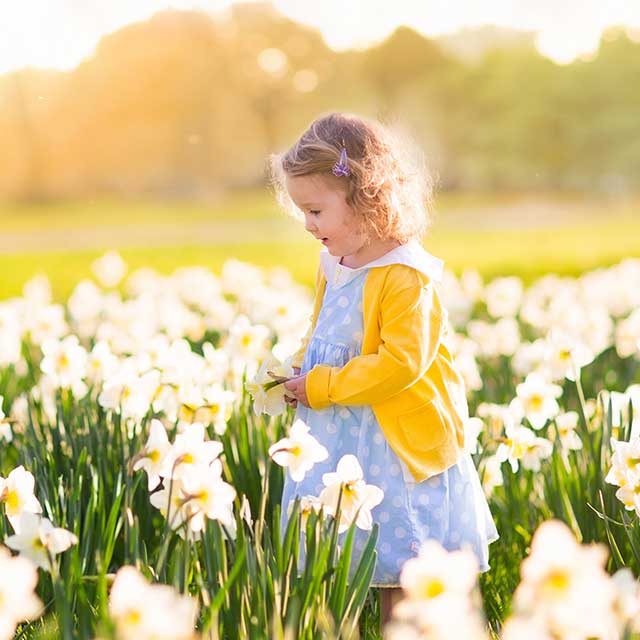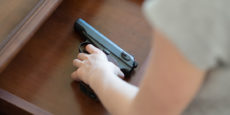
We know Easter isn’t about the bunnies, eggs, pastels, and chocolate.
(Well, maybe its’ a little bit about the chocolate…We see you sneaking some out of your kid’s basket, along with those jelly beans. And the peeps. You’re not fooling us.)
Easter is about the sacrificial death and glorious resurrection of Jesus Christ.
Easter makes hope, second chances, and something beyond this life touchable.
The most genuine response to this kind splendor is wonder.
Unfortunately, today’s pace of life doesn’t leave much time for wonder. And Easter, especially, is often so busy with church services and family meals and travel that the splendor of Jesus’ resurrection doesn’t have a chance to sink in.
This bums us out, because splendor without wonder is like taking your family on a trip to the beach to stare at the water…but then never getting out of your car.
“That’s it, kids! Isn’t the ocean grand? Aren’t you glad you saw it. Now, who’s hungry?”
Splendor with wonder, however, is like inviting your kids to experience the sand between their toes, and to smell the briny air, and to hear the crash of the waves on the shore.
We want your Easter to have that kind of wonder.
Sand-between-the-toes kind of wonder.
To help, we’ve created a list of ideas to experience the wonder of Easter through all five senses. We invite you to try one or all of them this week, and make your Easter wonder-ful.
Use each of the five senses to help your kids engage in Easter
- The Sights: Use a smartphone to take your kids on a creative scavenger hunt around your house/neighborhood to capture everyday things that represent Easter themes. Examples could be like a picture of a cross-shaped electrical pole or an open shed door for the cross or empty tomb. Or like a flower beginning to bloom or the sun breaking through the clouds to represent new life. If they’re old enough, let them hold the phone to really capture the frame. Share your pictures online or with others as a way for your kids to learn to help others “see” the Easter story themselves. Perhaps you can even print them out as placemats for your Easter dinner.
- The Tastes: One of the first things Jesus did after his resurrection was cook breakfast for his friends. Whether you’re making a traditional meal or grabbing dinner out, you can copy his example and let your food help you engage the Easter celebration more intentionally. Try doing an “out loud” praise session by having everyone take a bite of the same thing at once and then saying, “Thank you, God, for (ham/potatoes/etc).” After each food has been eaten, read this verse from Psalm 34:8: “Taste and see that the Lord is good; blessed is the one who takes refuge in Him.”
- The Sounds: There are many great worship songs that talk about Christ’s death and resurrection. Listen to one as your household wakes up or before your meal, such as the hymn “How Deep the Father’s Love for Us” or “Glorious Day” by Casting Crowns. Ask some simple follow-up questions, such as, “What words or thoughts in this song remind you of Jesus?” Or, “What does Easter tell us Jesus thinks about us? (Ex. He loves us and wants us to be with him.)
- The Textures: Easter baskets are usually associated with “getting.” Invert this and help your kids see Easter as a time for “giving,” too. After their basket is empty (or buy some empty ones specifically for this), involve them in filling those baskets with freshly-baked cookies for a neighbor or food for a local pantry that serves the poor. Let them be as hands-on as possible, including throwing in something personal or quirky to express their own Easter message.
- The Smells: Tell the story of Easter by reading some key Scriptures and connecting them to some pleasing and unexpected scents. Encourage your kids to close your eyes so they don’t know what they’re about to smell:
o Mark 14:1-11: Perfume to represent the anointing of Jesus
o Mark 14:22-23: Fresh baked bread to represent the body of Jesus
o Mark 14:24-25: Grape juice to represent the blood of Jesus
o John 19:29: Vinegar to represent Jesus dying for us on the cross
o John 19:38-42: A seed (with dirt) to represent Jesus being buried in the tomb
o John 20:19-23: A flower to represent the resurrection of Jesus
Source: My Life Tree








